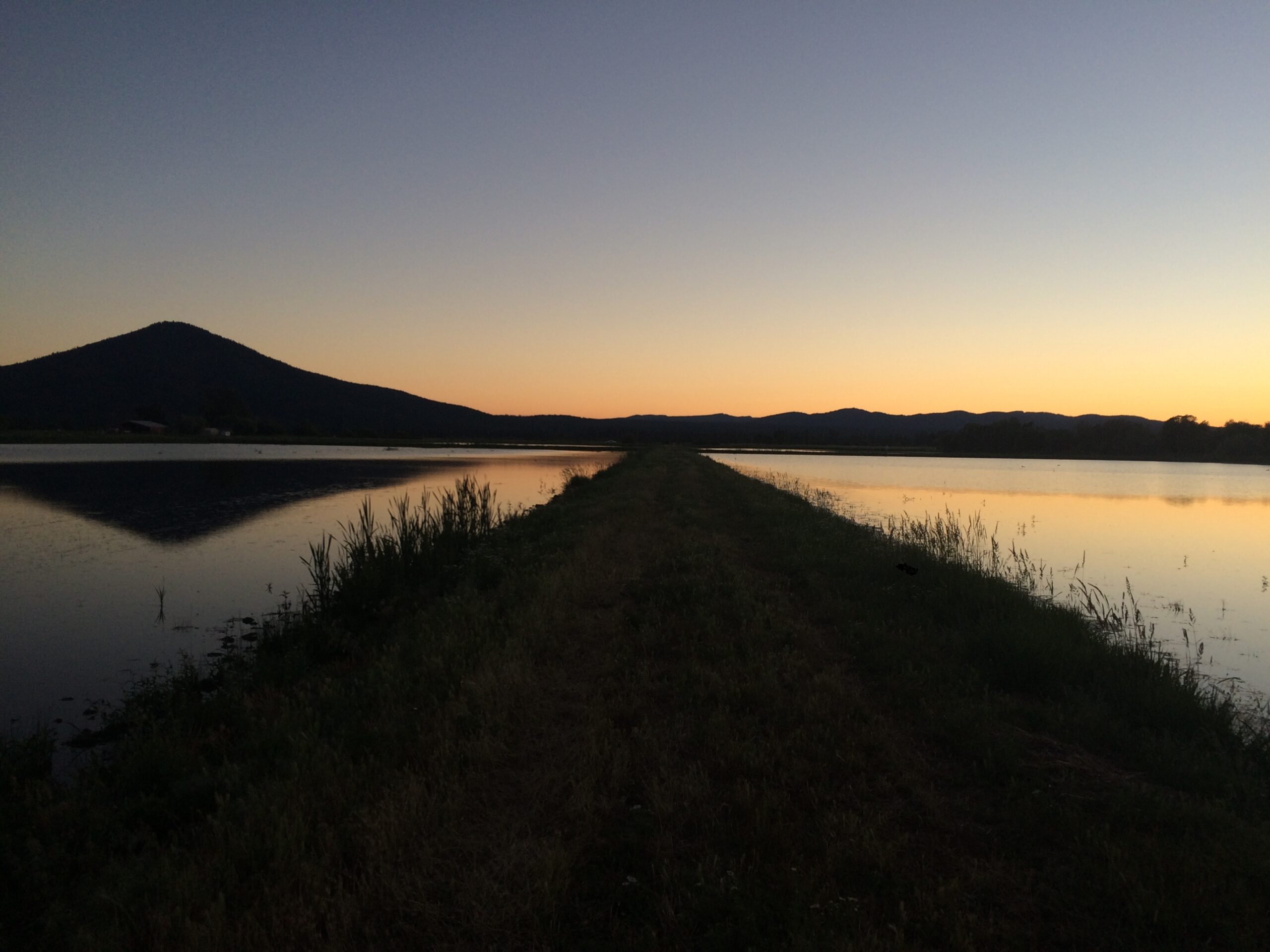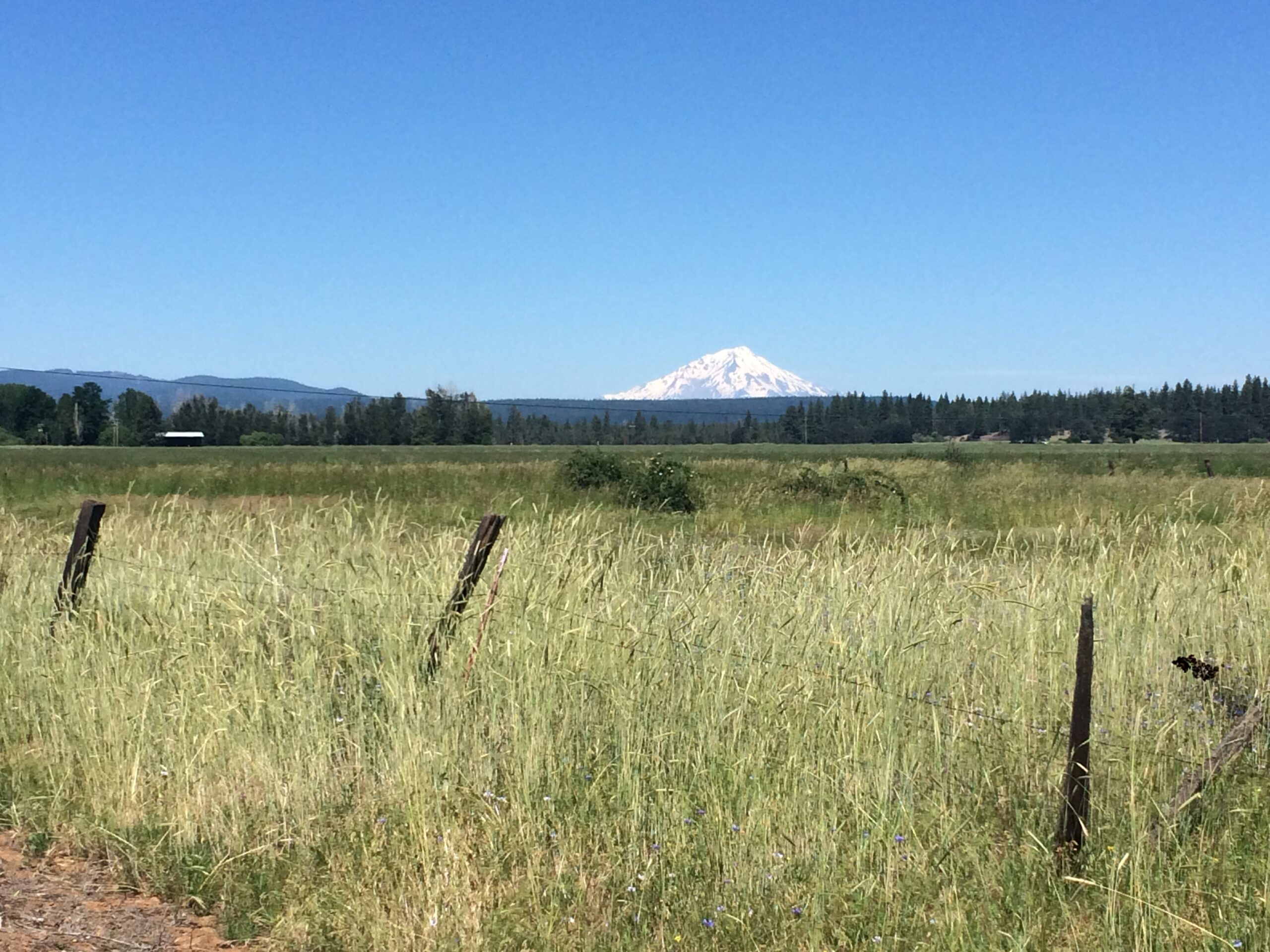
Julia Paige-Carter

Julia Paige-Carter
Do you know how some places have a certain smell? A smell that imprints itself on the fabric of your mind, your memories. My family’s wild rice farm has one of those smells, it’s earthy and dry and smells like grasses and rust and Deet. I’ll smell it, and immediately, I am a child again, catching mosquito fish along the water’s edge.
My late grandparents, Pat and Ray purchased their property in the 1970s. Their children, mostly grown by this point, were unimpressed. It is far from any major cities, and they were convinced that it was home to sasquatch. Once my grandparents settled in, they decided to join the other farms in the area by growing wild rice. It is a dark grain that is chewy and sturdy. It’s delicious in soups, salads, and stuffing, but it’s terrible when puffed in chocolate and even worse by itself. My grandparents put it in just about everything and we ate it all, mostly just to make them happy.

My grandparents were old school. They married young, had children young, and lived slowly. So, it makes sense that they were slow to change, and the farm exemplified that. They struggled to see the value in sustainable farming practices, even though the farm rarely broke even. Sustainable farming can take a while to become profitable, and some methods certainly have downsides. However, they loved the land, its animals, and plants, and I believe it’s about time the farm evolves to demonstrate that.
There are several major ways that we can implement sustainable farming practices. They are reducing water use, limiting the use of pesticides, herbicides, and fertilizers, and utilizing a sustainability mindset. My family’s farm is just like many thousands of family farms across the country and these recommendations, if applied everywhere, would have an amazing impact on preserving our country’s water resources and biodiversity.
The farm is far north, near Mt. Shasta, California. It’s far from any cities or even large towns, and when they purchased the property, there was nothing on it besides grasses and a few trees. It did, however, boast river access. Called the Little Tule River (pronounced Too-lee), after the cattail that lines the water. Tule is a sturdy plant that the Ahjumawi, the Indigenous band in the area, used to weave baskets and canoes.
The river is spring fed, an icy 50 degrees year-round, and home to many native and nonnative species, such as brown bullheads, Sacramento suckers, rainbow trout, and the endangered Shasta crayfish. The area is also a stopover for Canadian and snow geese, as well as American white pelicans and blue-winged teals. It is also home to Lewis’s woodpeckers, northern pygmy owls, bald eagles, and a large population of ospreys. The sheer amount of wildlife is astounding, it is one of the many things that makes the area incredible.

A wild rice farm requires huge quantities of water, as wild rice grows in rice paddies, areas of land that are flooded nearly year-round. This causes several issues, such as evaporation, percolation and seepage, and soil and watershed pollution.
There isn’t much that can be done to reduce water use in a wild rice farm. However, there are methods of reducing the impact. Firstly, implementing water storage for the off seasons and for non-flooded paddies. This will reduce water evaporation and can be used to flood paddies as needed. This will also make water testing easier to check for high nutrient levels, pesticides, fertilizers, and invasive species. Doing this will keep animals, the watershed, and the soil healthier while reducing water waste.
The second method to reduce water waste is to dry out some of the fields and grow non-water-based crops, such as alfalfa or soy. Doing this has several benefits: It will help to reduce water use and waste and it will restore the soil’s nutrient levels naturally. This is known as crop rotation, and it is a method of farming that helps to prevent soil depletion and erosion, improves the soil structure, and increases the biodiversity in the area. It has the added benefit of allowing a farmer to choose other crops to grow, providing additional income and reducing the dependency on a single crop.
My family’s farm has one pest, one critter that beats all critters. They’re called tadpole shrimp, but they’re neither tadpoles nor shrimp. They’re a crustacean that lives amongst and feeds on rice seedlings. These crustaceans are incredibly resilient and nearly impossible to eradicate.

Pesticides are often used to manage these critters when other control measures fail. However, there is another non-pesticide method of fighting their populations. Agricultural entomologist and Cooperative Extension specialist Ian Grettenberger of UC Davis has proposed alternative management. He and his colleagues found that mosquitofish proved able to suppress tadpole shrimp populations, especially in the early stages of the crustaceans’ development. These little fish are much more environmentally friendly than pesticides, and they provide food for the various species in the area.
As most farming operations do, ours uses fertilizers to restore nutrients to the soil. However, nitrates and phosphates can have lethal impacts on the watershed. Growing wild rice using fertilizers is especially dangerous for the environment as the water is commonly returned to the local river and takes any dissolved fertilizers, herbicides, and pesticides with it. These nutrients and contaminants can lead to algal bloom, which takes over streams and rivers, and chokes fish and invertebrates as it decays.
Further, since the fields are flooded most of the year, the water slowly infiltrates into the ground and into the water table below. This can lead to the contamination of drinking water if people in the area are drinking water from the aquifer and wells. Nitrate-contaminated drinking water is extremely dangerous and even deadly, especially to young children.
The solution to fertilizer pollution is to eliminate its use. There are other ways to naturally restore soil nutrition, as mentioned earlier. Crop rotation and field rotation are excellent methods, while having a mono-crop depletes soil nutrition, reduces organic matter in the soil, and can cause significant erosion. There are many options for additional crops, alfalfa, soy, hops, and honey are some of the common crops in the area. Bees are an excellent addition to any farm, and ours already has about ten bee boxes. They provide pollination services, increase biodiversity, are indicators of the health of the area, and produce honey that has antifungal properties and can help soothe a litany of ailments.
I was blessed to spend my childhood on the banks of the Tule River, dipping my feet into its crystalline water, the tule blowing in the breeze. This land contains a history of the species that live here, the families before mine, and now my own. Advocating for sustainable change on a family farm can sometimes be just as difficult as creating change on the national level. But it is important to try. If implemented, these changes will ensure that my family’s farm lasts for many more years to come, but when it is finally over, its environmental impact won’t be quite so abiding.
